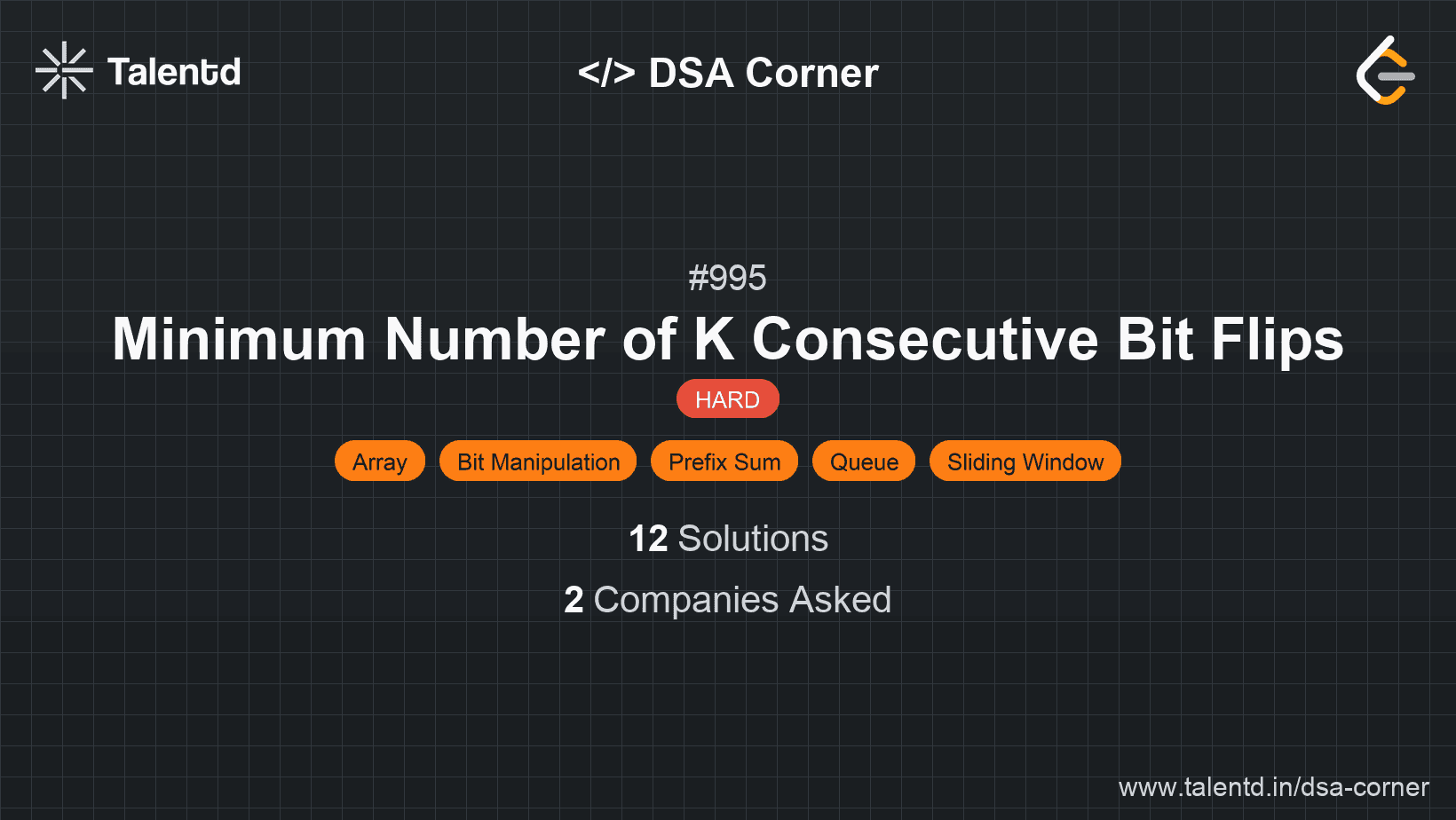
Sponsored
Sponsored
This approach uses a greedy strategy with the help of a queue to track the index of flips. The idea is to traverse through the array and only flip when necessary, using a queue to efficiently track start points of flips that affect the current position. When flipping, add the index to a queue. Dequeue any index that is outside the current consideration (i.e., more than 'k' steps away).
The time complexity is O(n), where n is the length of nums, because we make a single pass through the array, and the space complexity is O(n) due to the auxiliary array used to track flips.
1function minKBitFlips(nums, k) {
2 let flips = 0;
3 let flipCount = 0;
4 let queue = [];
5 for (let i = 0; i < nums.length; i++) {
6 if (queue.length && queue[0] + k <= i) {
7 queue.shift();
8 flipCount--;
9 }
10 if (nums[i] === flipCount % 2) {
11 if (i + k > nums.length) return -1;
12 flips++;
13 queue.push(i);
14 flipCount++;
15 }
16 }
17 return flips;
18}
19
20console.log(minKBitFlips([0, 0, 0, 1, 0, 1, 1, 0], 3)); // Output: 3
21The JavaScript approach employs an array to mimic queue behavior for tracking flips. The main loop maintains flip status using basic flip counting, updating results accordingly.
This approach utilizes a sliding window technique with a flipping effect flag, which acts as a state tracker for ongoing flip operations. Using an in-place element flipping marker in the array enables this technique to minimize memory usage and avoid using additional data structures to track state.
Time complexity is O(n) because only single iteration and local modification are performed, while the space complexity is O(1), assisting state via in-place array manipulation.
With JavaScript, this pattern utilizes reversal `A[i] += 2` within the array to manage state without resorting to external containers, pushing complexity efficiency.